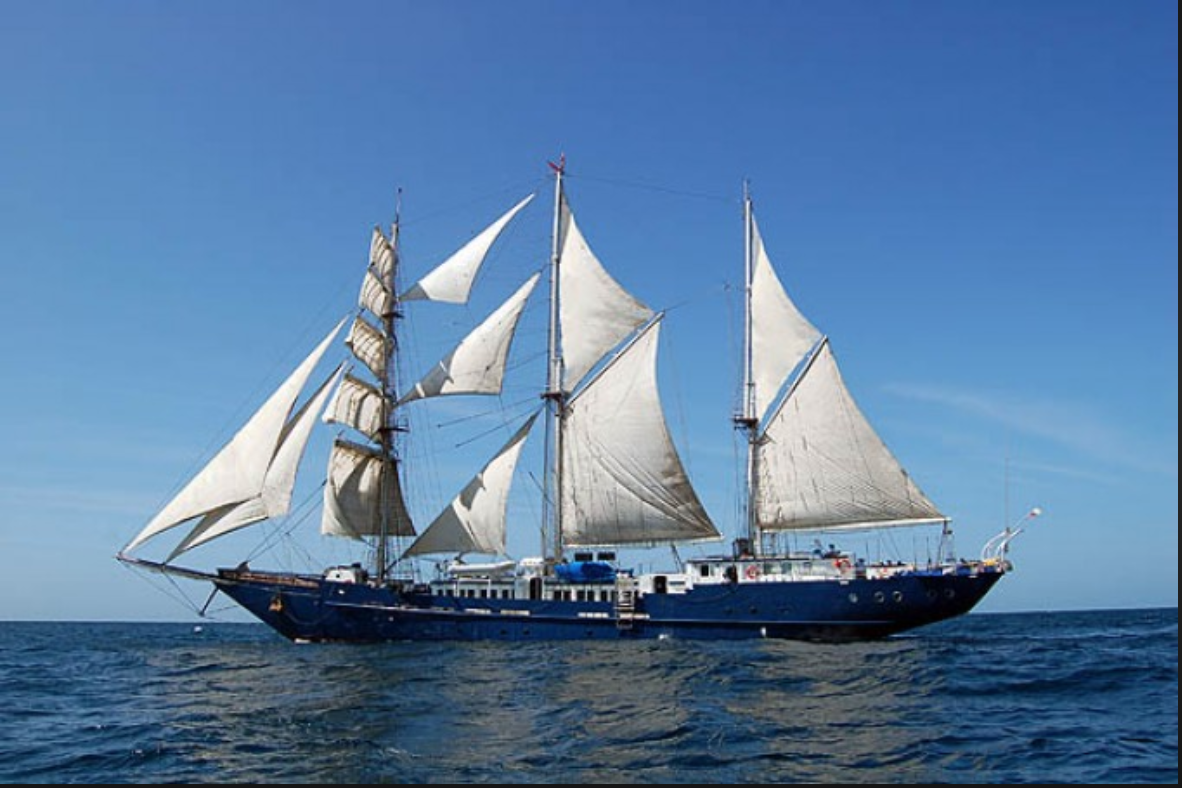
Click on map with phone or tablet, use slider in upper right of map to see details.
Quayaquil is a typical South American city with lots of buses, horrible architecture, lots of small shop and hard working people. We noted throughout the country there were very few smokers and an absence of alcohol. The highlight was the Malecon along the waterfront and the hillside leading to the Hope lighthouse.
After a day in Quayaquil, we met up with our group and headed to the airport for the flight to Baltra in the Galapagos about 600 miles west. The Galapagos are a group of volcanic islands located in a part of the Pacific where a number of the major ocean currents come together creating unique environments for each of the islands. Additionally, they are located on the edge of a tectonic plate that moves about 3″ per year. Over a million years the eastern most island has moved about 100 miles from the most recent western island. The result is the area were Darwin was able to see evolution at work.
First stop was at a turtle breeding center where they are trying to rebuild the turtle population first demolished by the whalers seeking a source of food and then the invasive animals such as rats, dogs, cats, goats and pigs….each taking there toll in different ways on different islands. Today, there are strict controls on landing plants, insects and animals and an extensive effort of irradication.
Our boat, the Mary Anne, a 190′ steel hull Brigantine built in 1997 with a crew of 12 and 16 guests, was the next stop. The accommodations were not impressive, but the public spaces combined with the crew and food were great. Dan even teamed up with Gunner, the youngest guest and a beer drinking buddy after each excursion.
The typical day provided for at least one hike on shore with our naturalist guide to inspect the geology, flora, birds and creatures. Nothing to strenuous, but each was unique. Most days we got a chance for a snorkel along the shore line. The highlight of these snorkels was a day with the sea lions fishing among the schools of fish and the rare viewing of a school of golden rays.
We had a great group of people and we think they all enjoyed their time on Mary Anne. While this cruise did not include the spectacle of elephants or whales or spectacular scenery of mountains and glaciers, it was most instructive of the evolving world we live in.
Arriving back in Quayaquil, we rented a car and headed for Chimborazo in the middle of the country, sea level to 14,000 feet in five hours. Ecuador has a per capita income of about $6,600. Agriculture is highly cultivated throughout the country, first along the coast it was rice, then bananas, then corn as we rose up on our drive. Finally, it was grazing of cattle and vicunas above the tree line. We did not get into the Amazon where they also have a significant development of oil drilling.
After a night in Riobomba at the lovely and unexpected Mansion Santa Isabella, we headed for the Lodge at Chimborazo, the second highest mountain in South America at 20,564 feet. Once again we lucked out with a clear view as the clouds cleared. Not much hiking at this altitude, this is Dan’s last visit above 10,000 feet without oxygen.
On to Quito, the capital, for our last day. With only part of a day, we decided to take the hop-on/off buss for a city tour. This is definitely a city originally settled in a valley surrounded by mountains, today the city extends up the mountain sides in every direction. Given the lateness of the day and the rain, we did not have a chance to explore the museums, cathedrals, etc. and could easily have spend a couple of extra days in Quito.
